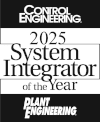Control Systems Upgrade Maximizes Efficiency for Dessert Packaging Line
Challenge
In the fast-paced world of food manufacturing, efficiency and precision are paramount for maintaining a competitive edge. When a major player in the food industry wanted to upgrade their packaging controls for flan and pudding products, they turned to the trusted engineering team at E Tech Group. The packaging process required precise control and synchronization to maintain product quality and optimize packaging speed. However, the client’s outdated controls system hindered their ability to meet growing production demands. The challenge was to develop an efficient controls solution that could be executed within a tight one-weekend timeframe and with minimal downtime. The project encompassed addressing outdated PLC and HMI systems, aging control panel hardware, and the need for improved networking communications.
Solution
Recognizing the tight project timeline, E Tech Group leveraged their expertise to create the best solution. Through planning and collaboration, they formulated a comprehensive approach that began with a thorough evaluation of the existing control panel and its components, and identified which areas required improvement and retrofitting. E Tech Group consulted with trusted vendors to assist in the retrofitting process for servo drives, motors, and gear boxes, and strategized the most effective approach to implement the necessary program changes. Once these enhancements were identified and received, the project team utilized a planned shutdown period to validate the functionality of the retrofitted products.
Over the course of the weekend, E Tech Group put the project plan into action. The team disassembled the customer’s control panels and installed new components, migrated existing PLC code to the new controllers, and converted the customer’s existing HMI screens to a new PanelView HMI application. They utilized Studio 5000 for retrofitting PLC programs, FactoryTalk View software to make required alterations to the customer’s HMI programs, in addition to command line programing to support network segregation for the new Stratix 5700s.
Results
The controls upgrade was achieved swiftly and effectively, all thanks to the unwavering dedication and collaborative efforts of E Tech Group’s engineering team. The customer experienced minimal interruptions and downtime, enabling enhanced production and operational efficiency. The upgraded PLC and HMI systems brought improved functionality, while the new control panel hardware simplified system maintenance and reduced costs. Furthermore, the enhanced networking communications facilitated seamless data transfer and real-time monitoring, empowering the client to make informed decisions and uncover possibilities for further optimization. E Tech Group’s collaboration, expertise, and determination to overcome project challenges demonstrates their commitment to customer satisfaction and their ability to deliver successful project outcomes under time-sensitive circumstances, solidifying their reputation as one of America’s fastest-growing system integrators.
The original version of this article was pulled from Food Engineering featuring Kevin Romer, Principal Engineering and Matt Smith, network architect IT/ICS for E Tech Group. Click here to read the original article. Cybercriminals Custom-Tailor Their Ransom Demands To Your Budget. According to the FBI, the three most common IT/OT (operational technology) infection vectors are email phishing campaigns (aka BEC or business email compromise), remote desktop protocol (RDP) and software vulnerabilities. While some hackers may intentionally want to bring down your production systems using the second and third vectors, “we’re only in it for the money” is a far better motive for breaking into your IT/OT systems—and what better way to do it than through the phishing emails scattered among the zillions of emails you get every day. Accidentally clicking on one email link can quickly connect you with ransomware—which can not only shut down your business system, but also your production systems, if they’re not protected. The Role Subpar Control Systems Play in Cyber Attacks “Once inside an organization, ransomware groups and affiliates will often take advantage of the misconfigurations within an organization’s Active Directory security posture,” says Marty Edwards, Tenable deputy CTO of OT/IoT. “Gaining domain privileges provides attackers with the necessary capabilities to distribute their ransomware payloads across the entire network.” According to the IBM “X-Force Threat Intelligence Index 2022,” ransomware was the number one attack type in 2021, accounting for 21% of all attacks. According to a 2022 SANS Institute survey, 40.8% of OT/industrial control systems (ICS) compromises came down from business IT systems. To safeguard production systems, manufacturers need to isolate OT from IT systems—or at the very least be able to have a quick disconnect when IT systems are infected. Secure Automated Systems Require IT/OT Separation In this article, we look at IT attacks and … Continued

The original version of this article originally appeared on ControlEngineering.com. In the Control Engineering webcast, “Edge series: Edge Computing Applications,” Jeffrey Allen, applications engineering manager at E Tech Group, and Nate Kay, control systems engineer at MartinCSI, explained how edge computing applications can be used for mission-critical, high-reliability automation and control applications. The webcast is archived for a year from the July 19, 2023, broadcast date. Edge Computing Insights: Edge computing can help enterprise resource planning (ERP) and supervisory control and data acquisition (SCADA) applications. Edge computing, as applied in a chemical plant, is providing benefits that can be replicated in other industrial edge computing applications. Challenges and some other considerations related to edge computing were covered in a July 19, 2023, Control Engineering webcast, archived for a year. Edge Computing Can Be a Valuable Asset Edge computing is increasingly proving itself to be a powerful asset in enabling mission-critical, high-reliability automation and control applications. By allowing data to be processed as close as possible to where it is generated, edge computing enables faster processing, empowering operators to respond to changing production conditions in real-time. Moreover, it allows sensitive data to remain onsite, rather than being sent to the cloud for further analysis, thus increasing security while saving on wide area network (WAN) costs. These topics and others were discussed in a July 19 Control Engineering webcast, “Edge series: Edge computing applications.” The webcast featured Jeffrey Allen, applications engineering manager at E Tech Group, and Nate Kay, control systems engineer at MartinCSI, as speakers. A preview of some of the information covered is provided below. Edge computing: ERP to SCADA Applications A common scenario in industrial facilities is for plant level operators to be required to input data from a business level Enterprise Resource Planning (ERP) into a Supervisory Control and Data Acquisition (SCADA) system that is … Continued

Authored By: Jakub Mocny, PhD, Group Engineering Manager In the world of industrial automation, the S88 standard, also known as ANSI/ISA-88 or Batch Control, plays a vital role in providing a universal framework for the control and automation of manufacturing processes. Developed by the International Society of Automation (ISA), the S88 standard offers a structured approach to designing, implementing, and maintaining batch processes. For those who are new to the S88 standard and want to delve into its applications across various industries, this article serves as a guide to understanding the fundamentals of the S88 standard, its benefits, and an overview of its working principles. What is the S88 Standard for Batch Control Systems? The S88 standard provides a comprehensive and modular methodology for designing, implementing and managing batch processes in industries such as: The S88 standard establishes a consistent and structured approach to defining the equipment, control strategies, procedural operations, and information systems required for effective batch process automation. Within the ISA-95 framework, batch systems adhering to S88 standard are identified as Level 2 systems. They are subordinate to Level 3 MES systems and achieve process control through interaction automation and control systems (ISA-95 Level 1 and 2). In practical terms, a batch control application executes recipes. A recipe is a sequence of operations containing multiple recipe phases. Recipe phases interface with the physical plant equipment through equipment phases typically executed by PLCs. S88 sets guidelines for best practices that help industries self-regulate quality and consistency. Applications of the S88 Standard in Industrial Automation While the S88 standard was originally developed for batch processes, its applications are not limited to specific industries. The versatility of the standard enables its adoption in a wide range of fields. In general, automation system builders may benefit from using the S88 concepts even … Continued





